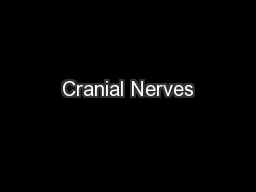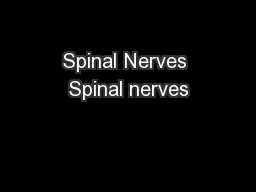PPT-Getting on your Nerves
Author : phoebe-click | Published Date : 2017-05-20
What a lot of nerve There are about 100000000000 neurons in an adult human These form 10000000000000 synapses or connections They represent 2 of the bodys weight
Presentation Embed Code
Download Presentation
Download Presentation The PPT/PDF document "Getting on your Nerves" is the property of its rightful owner. Permission is granted to download and print the materials on this website for personal, non-commercial use only, and to display it on your personal computer provided you do not modify the materials and that you retain all copyright notices contained in the materials. By downloading content from our website, you accept the terms of this agreement.
Getting on your Nerves: Transcript
Download Rules Of Document
"Getting on your Nerves"The content belongs to its owner. You may download and print it for personal use, without modification, and keep all copyright notices. By downloading, you agree to these terms.
Related Documents














